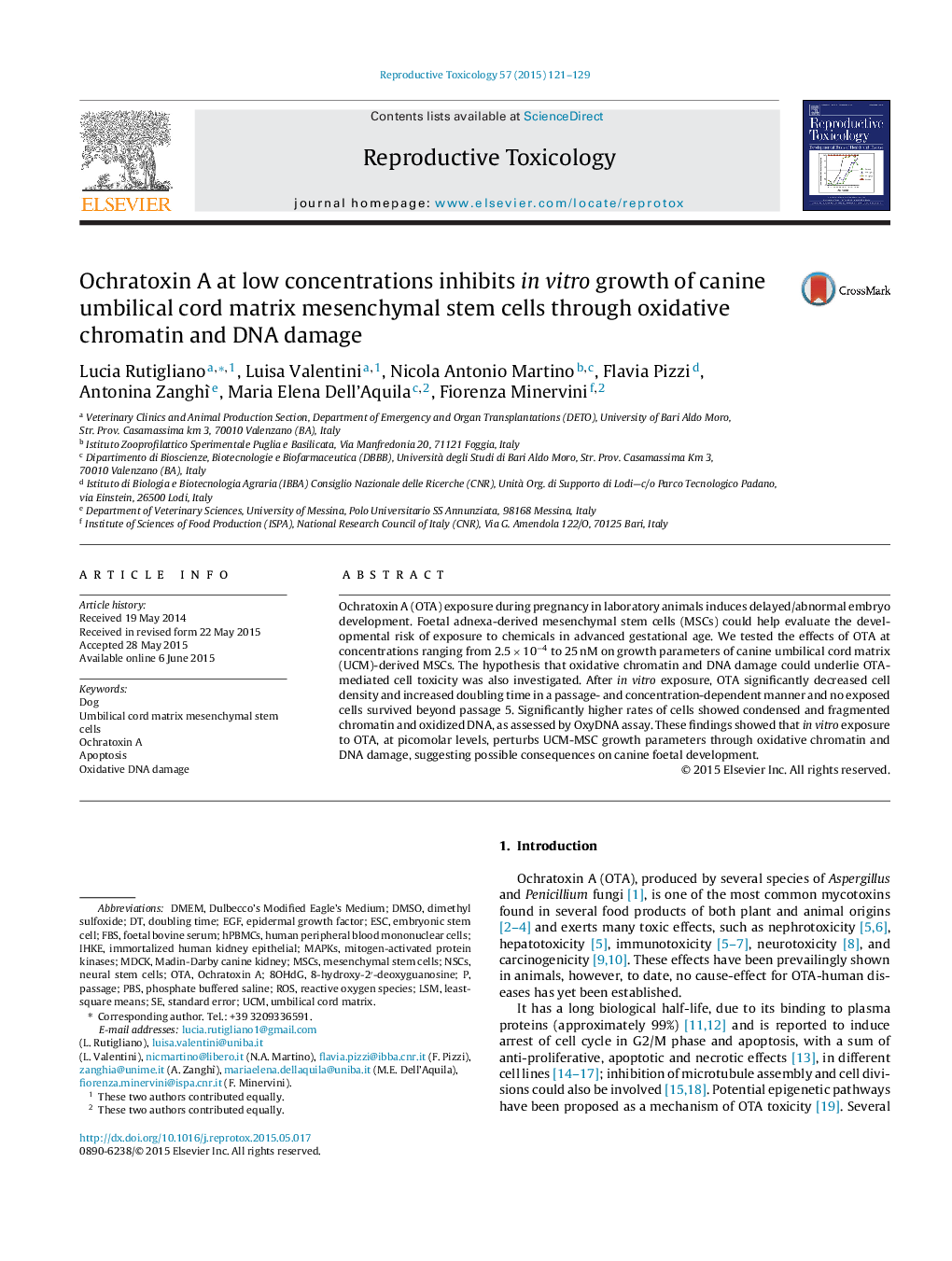| کد مقاله | کد نشریه | سال انتشار | مقاله انگلیسی | نسخه تمام متن |
|---|---|---|---|---|
| 2593392 | 1562162 | 2015 | 9 صفحه PDF | دانلود رایگان |

• Canine UCM-MSCs as model for reproductive and developmental toxicity.
• Significant inhibition of UCM-MSC proliferation by ochratoxin A at picomolar levels.
• Passage- and dose-related OTA toxicity.
• OTA-induced oxidative toxicity at chromatin level (apoptosis induction).
• OTA-induced oxidative DNA damage as assessed by 8-hydroxy-2′-deoxyguanosine (8OHdG).
Ochratoxin A (OTA) exposure during pregnancy in laboratory animals induces delayed/abnormal embryo development. Foetal adnexa-derived mesenchymal stem cells (MSCs) could help evaluate the developmental risk of exposure to chemicals in advanced gestational age. We tested the effects of OTA at concentrations ranging from 2.5 × 10−4 to 25 nM on growth parameters of canine umbilical cord matrix (UCM)-derived MSCs. The hypothesis that oxidative chromatin and DNA damage could underlie OTA-mediated cell toxicity was also investigated. After in vitro exposure, OTA significantly decreased cell density and increased doubling time in a passage- and concentration-dependent manner and no exposed cells survived beyond passage 5. Significantly higher rates of cells showed condensed and fragmented chromatin and oxidized DNA, as assessed by OxyDNA assay. These findings showed that in vitro exposure to OTA, at picomolar levels, perturbs UCM-MSC growth parameters through oxidative chromatin and DNA damage, suggesting possible consequences on canine foetal development.
Journal: Reproductive Toxicology - Volume 57, November 2015, Pages 121–129